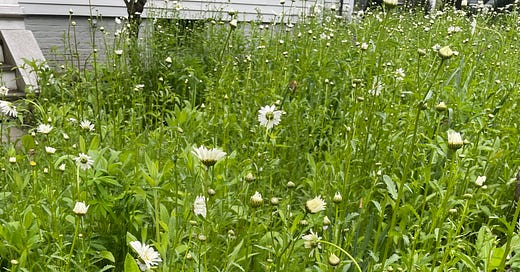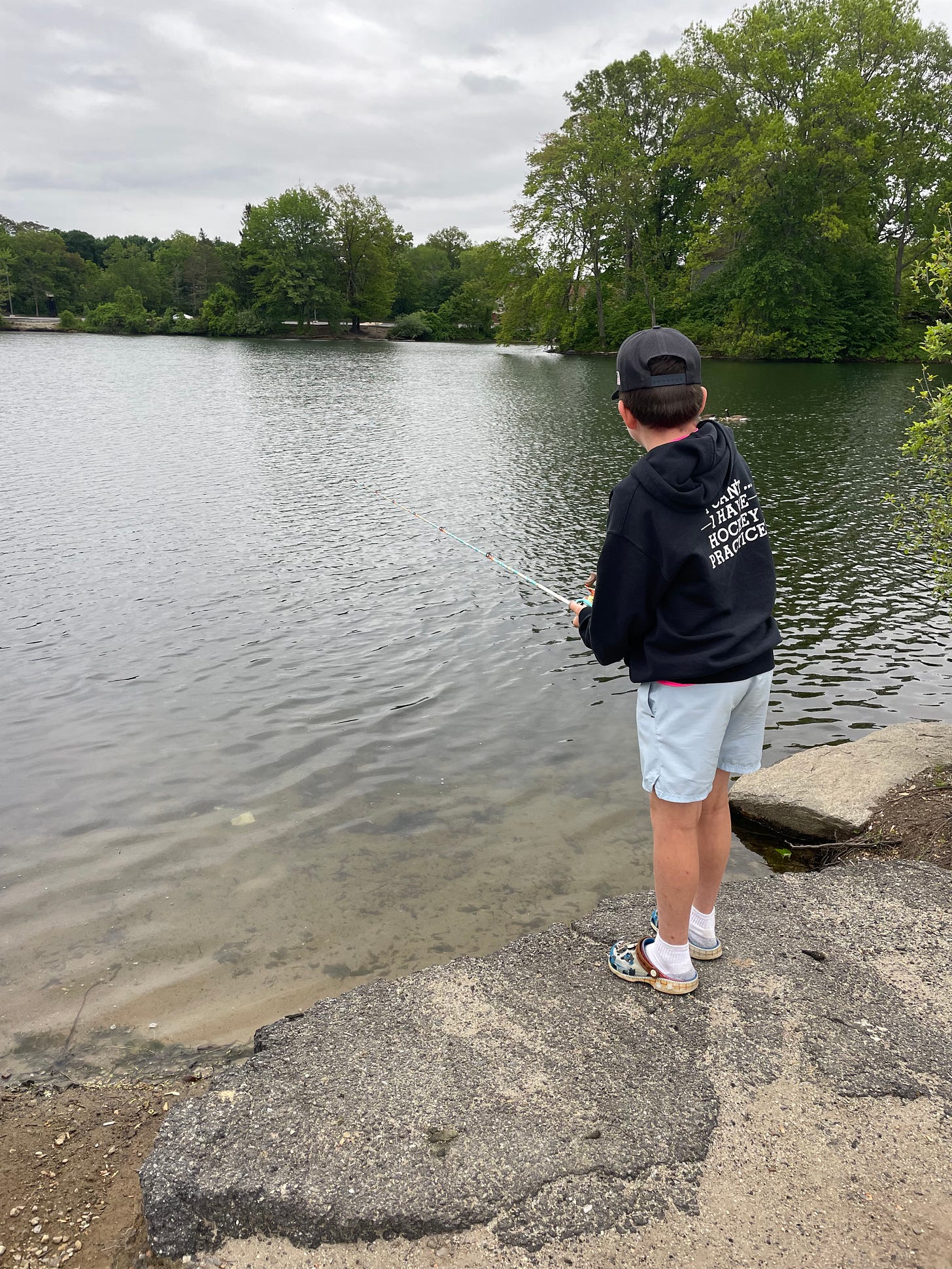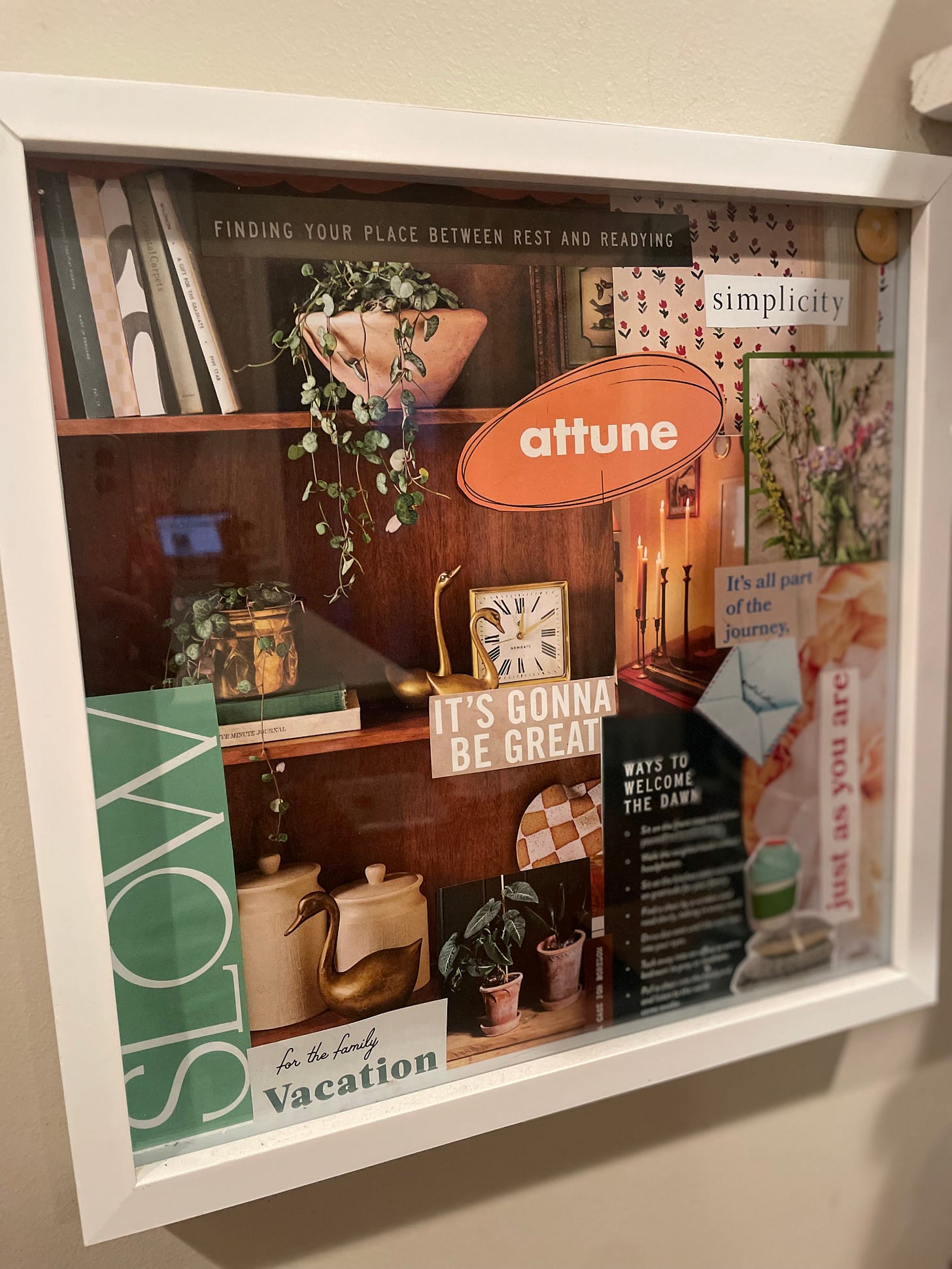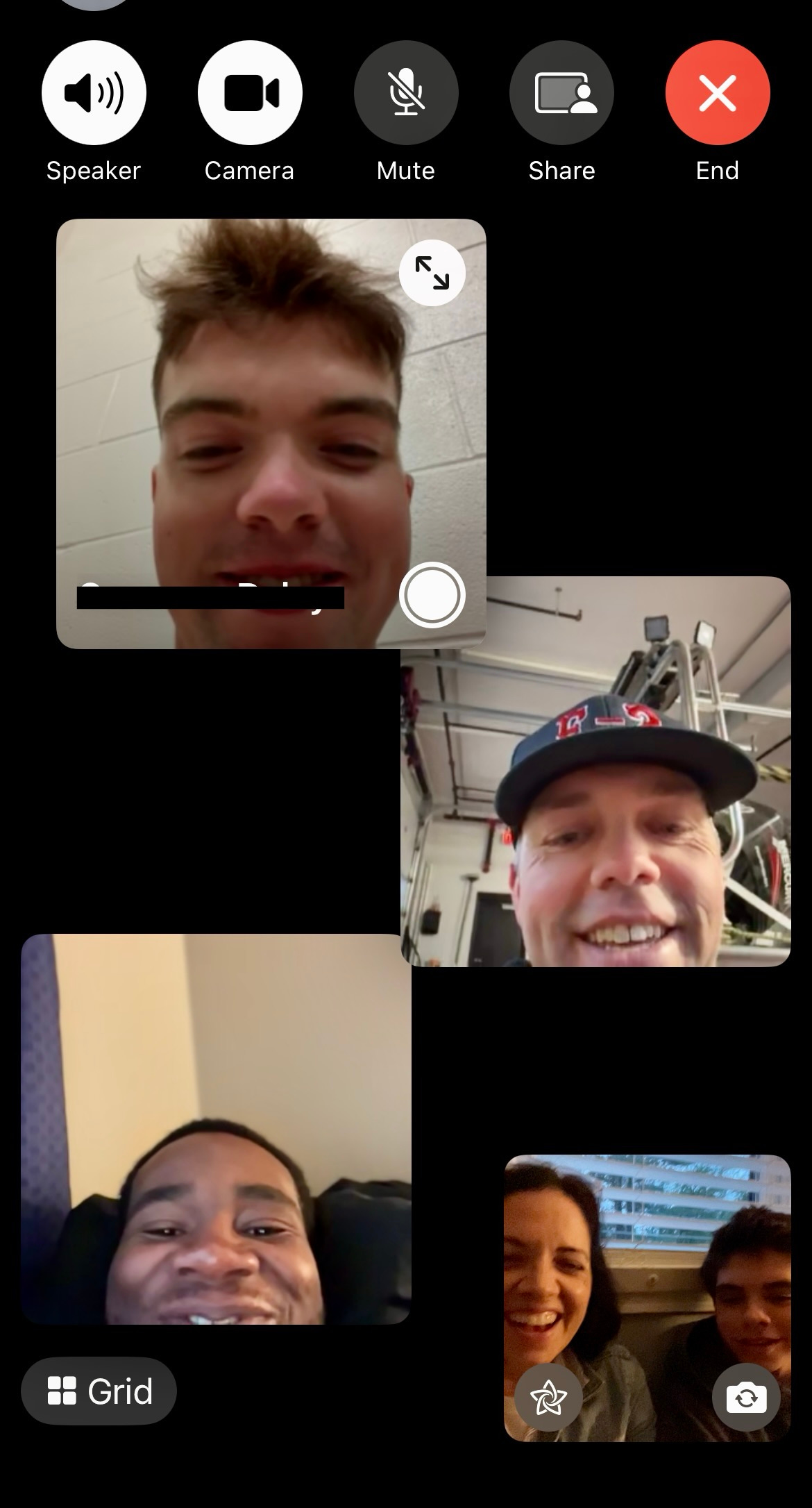Hey, Moga friends! Summer is [almost] here! Now I may be biased, but I think June is one of the best months of the year. Yeah, it could be because it’s the month I was born, but it’s more likely because it ushers in one of my favorite seasons and brings with it more sunshine, more warmth, and a break from the usual day-to-day. If you’re not an educator or someone who experiences summers off, it’s a really unique experience. There is excitement, yes—but there’s also a good amount of anxiety. Imagine going from high-speed, high-energy living for 9 months and then all of a sudden coming to a hard stop. And during that time, you’re getting to know hundreds of new faces, and then, just like that, they’re gone. When I was teaching full-time, I loved the arrival of summer, but I also felt a kind of sadness and loss. Another year, another group of kids, and the sudden disappearance of the structure my brain had been wired around.
Now, I’m not trying to get sympathy for having summer off (ha!), but I’m just trying to paint a picture. These past few weeks, I’ve been trying to ease into the transition. One way has been getting back into the daily fishing grind. G has become a full-on fishing enthusiast. When he’s not fishing, he’s usually watching fishing videos (with some Minecraft sprinkled in, too) or begging us to take another trip to Cabela’s. I don’t really mind playing fishing chauffeur because it just means more reading time for me. We’ve created a truly symbiotic relationship.
Summer also tends to trigger the mental list of “everything I didn’t get to during the school year.” So I have to be really intentional about slowing down (something that seems to come up for me again and again) and remind myself that not everything needs to get done. That brings me to the difference between setting goals and setting intentions. As you might remember from my January newsletter, each New Year’s Day I create a vision board of intentions for the year. It lives on our kitchen wall all year, but honestly, I don’t tend to revisit it more deeply until June, once my days start to slow down. I looked at it again recently, and a theme emerged—one I hope to carry with me this summer and into the rest of the year.
In the book, The Seven Spiritual Laws of Success, Deepak Chopra writes, “Attention energizes, and intention transforms. Whatever you put your attention on will grow stronger in your life. Whatever you take your attention away from will wither, disintegrate, and disappear.” That quote really hit me, especially after something that happened recently. Cameron came home to visit last month, and when his return plans changed unexpectedly, he had to drive back to base instead of flying. And to make matters worse, he was on a strict timeline. He had to be back to base by 6:30am the next morning! This my friends, started The Great Unravel. It was as if all the tools in my emotional toolbox had vanished, and my brain instantly jumped to all the worse-case scenarios: what if he got stranded, what if he stopped in a sketchy rest area and got mugged, what if he got into an accident, what if, what if, what if. I was a puddle of tears. I couldn’t even open Life360 to check his location because seeing the distance between us felt like too much. Honestly, it felt like I had sent my 5-year-old Cameron on a solo road trip and said to him, “Good luck! I hope you make it!”
When I woke up at 3am and finally checked Life360, I saw he was cruising along and I watched him roll into base by 4:15am. In that moment, I thought: Well, that was a lot. But it also made something really clear to me—our minds don’t always know the difference between fact and fiction. If they did, I would have realized that he was safe. In each moment, he was okay. But instead, I let my wild imagination spiral (yet again) and create an entirely different story—one that wasn’t real. And that’s where attention comes in. I let mine get swept into a loop of unhelpful fiction. What could have helped was simply asking, Is this real? Just pausing long enough to name what was actually happening—and what wasn’t—and then deliberately placing my attention elsewhere. But by the time I thought to do that, I was already too far gone.
So, this season will be a season of intention for me. Intention isn’t about control (“I will focus perfectly today”), but about direction—a way of being that we wish to return to again and again (“I intend to bring more presence to my days,” or “I want to notice moments of joy”). That’s how we live our intentions, one mindful return at a time. When our attention drifts—as it inevitably will—may we remember that gently guiding our focus back to what matters is not a failure, but a practice.
Love Letters From Nature
As I’m sure many of you can relate—especially after the stretch of cold, gray days April and May brought—I’ve been soaking up as much time outside as possible (especially when it doesn’t require a winter coat or umbrella!). On these days, I fling my windows open, and let the sensory-filled world of late spring spill into the house—the bold colors, the return of birdsong, the earthy smell after rain. It’s such a contrast to the quiet of winter, when nature feels so still and silent.
It reminds me of another quote from Deepak Chopra’s The Seven Spiritual Laws of Success, “If you observe nature at work, you will see that least effort is expended. Grass doesn’t try to grow, it just grows. Fish don’t try to swim, they just swim. Flowers don’t try to bloom, they bloom.” This idea has felt especially true lately. There’s this one patch of wild daisies I pass regularly on my walk—they seem free, messy, and blooming with such ease. And it makes me wonder how much more ease we might feel if we took our cue from that. What if our intentions weren’t about pushing or proving, but about attuning? Noticing what season we’re in, tuning into what’s needed, and allowing things to unfold a little more gently. <3
Kid Moga
I recently completed a Collaborative Problem Solving (CPS) training through Think:Kids at MGH, thanks to Fenn. It’s the kind of training I wish I’d had when I was a new parent, but it also affirmed some of the instincts I’ve always had about working with kids. At its core, CPS is a skills-based approach to understanding and responding to challenging behavior. What I appreciate most about it is that it offers a menu of responses. Yes, the menu even includes the more traditional “Stop doing that or else” response (which I’ll admit, I use often!). But what CPS helps highlight is that while those responses might work temporarily, they don’t build the long-term trust and skill development that actually helps kids grow and thrive.
Instead of focusing only on the behavior, CPS asks us to shift our attention to the problem we’re trying to solve—and more importantly, the skills a child might be lacking that are getting in the way. As a teacher, this resonates deeply. It’s like expecting a student to know where to put an apostrophe without ever teaching them how. We can’t assume kids are choosing to struggle—we have to ask ourselves: What’s getting in the way?
This approach really aligns with the kind of mindful work I’m trying to practice—to respond instead of react. Of course, we won’t get it right—especially when we’re tired, hungry, or simply being human—but more often than not, it makes a difference.
Some key takeaways I’d love to share, especially if you work with young people:
People do well if they can.
Undesired behaviors are often signs of lagging skills, not a lack of will.
The CPS Menu of Options:
Plan A – Use your power/authority to impose a solution.
Plan B – Solve the problem collaboratively. (Empathize→ Share → Collaborate)
Plan C – Drop or reduce the demand (for now).
Plan B is the heart of CPS. Here’s an example of what it might look like in action:
Hey, G, I notice that you struggle to get started with homework when I ask you to do it afterschool. What’s up with that? [listen] Yeah, I get that you’re tired after school (empathize). Here’s my concern…I worry that you’re going to get behind on your work if you keep pushing it off (share). Let’s come up with a plan that addresses both our concerns (collaborate). [Listen and consider ideas, share ideas, come up with a plan.] I agree that you have time in the morning to get your homework. Let’s try that for next week and see how it goes. (True Story!)
Plan B helps reduce behavior, solve the actual problem, build lagging skills, and—most importantly—build or restore a trusting, supportive relationship. Click here to learn more about a free, Think:Kids course about understanding thinking skills.
Recommendations from a Mindful Library
As I mentioned earlier, I’m in full-on reading mode now that G is back to fishing. I’ve been flying through books lately and have a few fun ones to share with you.
As a former English teacher, I love a good circular ending. That’s why I always started and ended the year with a picture book. Miss Rumphius was the book I read every June as I sent my kids off into the world to do good things and make the world a better place. I was so inspired by this picture book that I spent one summer trying to sow lupine seeds in my neighborhood to no avail. Oh well. Anyway, Miss Rumphius is a beautifully illustrated picture book about a woman who sets out to fulfill three life goals: travel the world, live by the sea, and do something to make the world more beautiful. She eventually scatters lupine seeds across the countryside. So sweet!
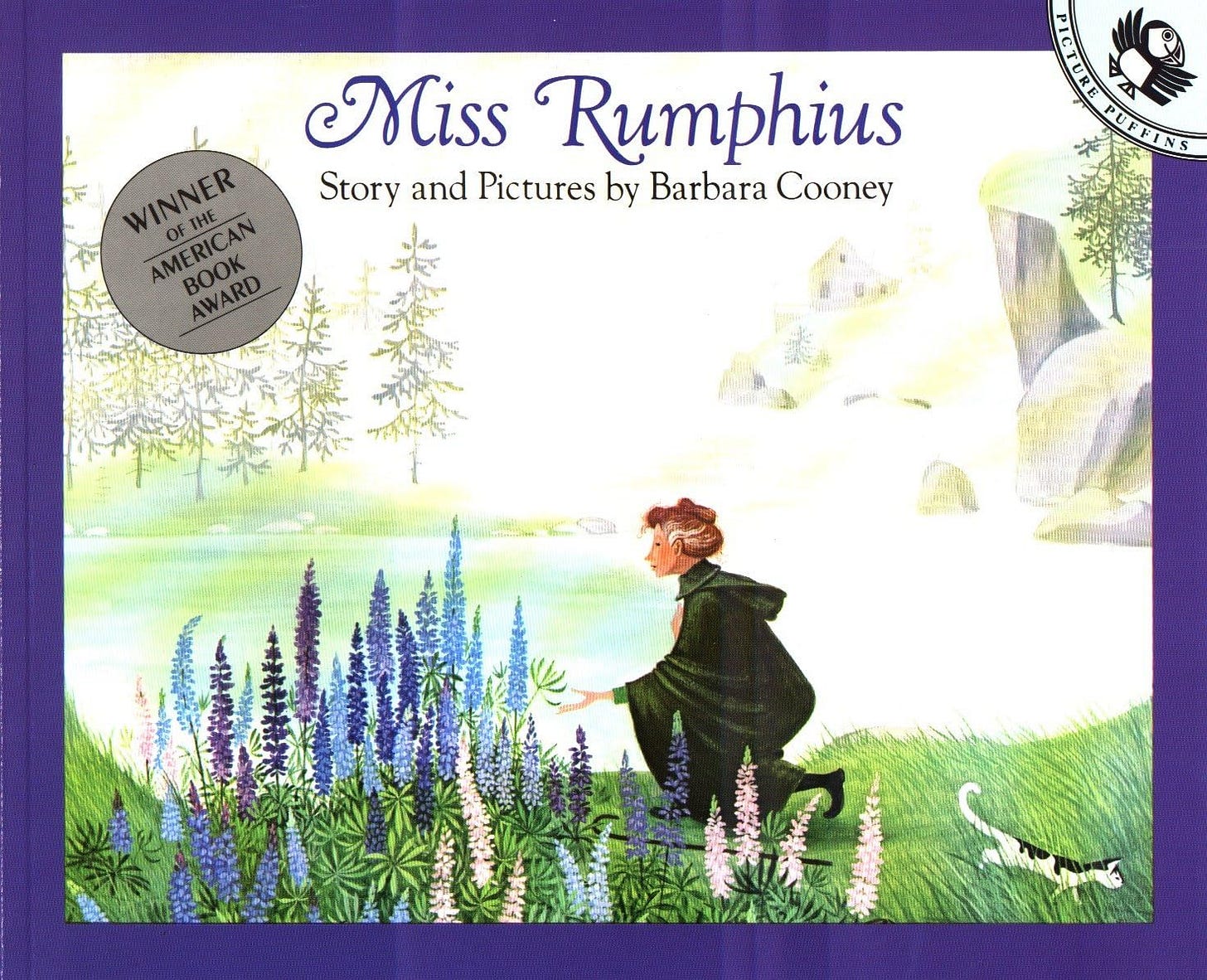
If you’ve never experienced a Kate DiCamillo book, have you ever even lived?? Her stories are full of nostalgia, whimsical settings, and quirky, unforgettable characters. Ferris, one of her most recent books, did not disappoint. This cast of characters—led by 10-year-old Ferris Wilkey—includes a grandmother who talks to ghosts, a little sister who wants to be an outlaw, and a family that’s chaotic in all the best of ways. I found myself laughing out loud in quite a few places. That said, with so many characters, it might be a better read-aloud for younger readers. I loved it!
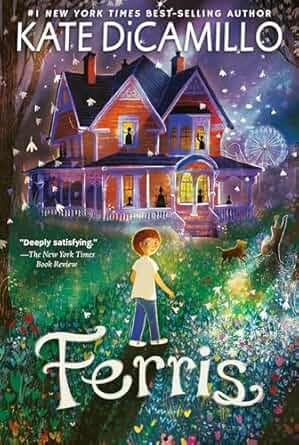
My library colleague and I have been fan-girling over this author all year long. You might remember that I shared another one of his books in March’s newsletter. This is his latest, and it’s a novel in verse. I’d recommend this one for older teens (think mature middle schoolers to high schoolers), as it explores some heavy themes, including drug use, strong language, and the emotional complexity of teen friendships. It’s a story about friendship—what it asks of us, what we’re willing to give, and how we balance our own needs with the needs of those we love. It’s beautifully written, heartbreaking, and it lingers long after the last page. (Check out his latest Substack post which aligns with my intention for this very newsletter but is funnier, even more creative, and will leave you with a happy heart!)
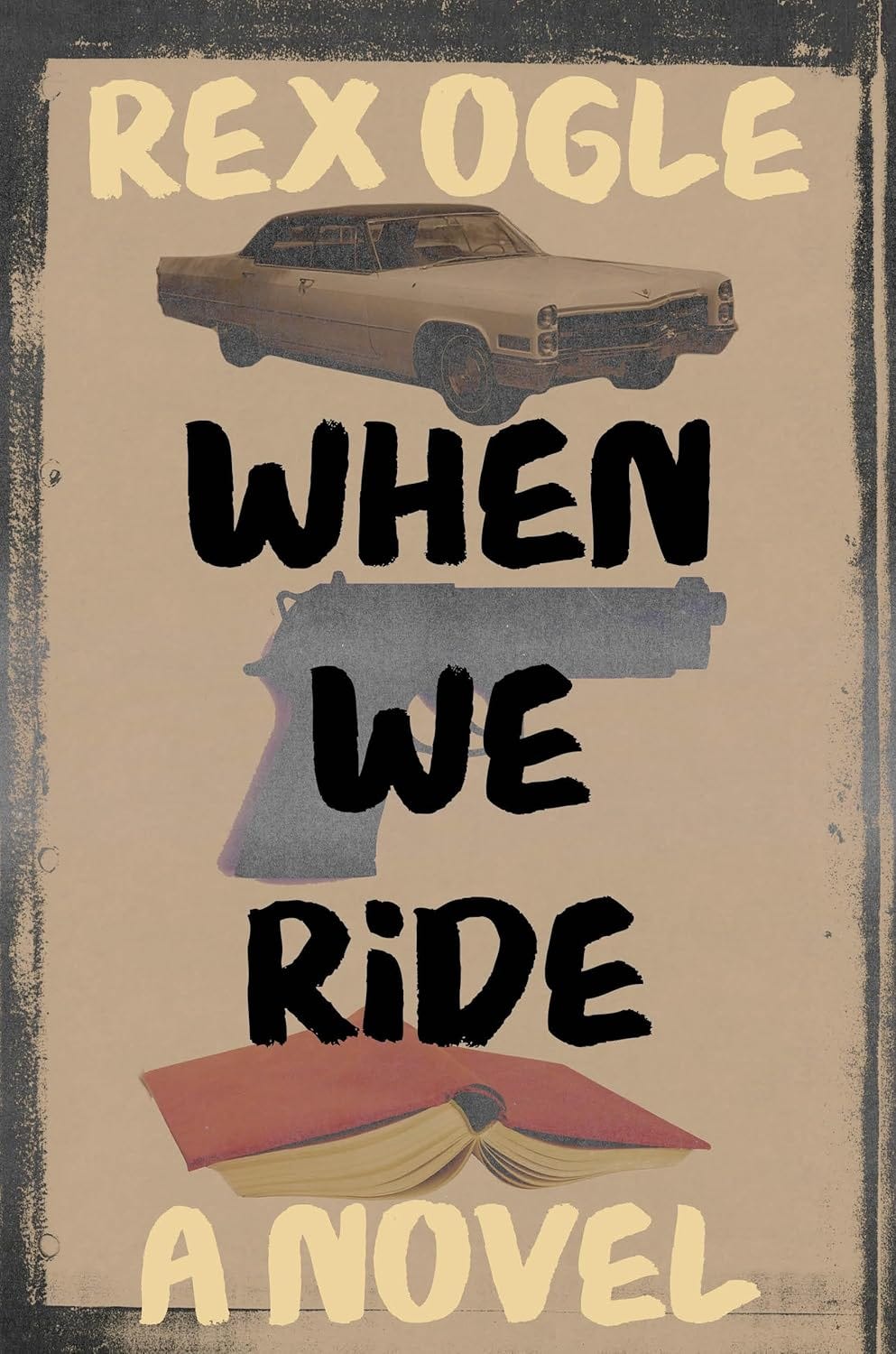
I stopped by a free little library recently, and came away with this book. Because I’m a sucker for good fonts and book covers, I took this one not knowing anything about the actual story. I haven’t been smitten with a book like this in ages, and it felt so good to transport myself into this sweet story. West with Giraffes is based on the true story of two giraffes who survived a hurricane at sea in 1938 and were then transported across the country to the San Diego Zoo. The story is told through the eyes of a 17-year-old boy who ends up helping with the journey. Now if you’ll excuse me, I have to start my persuasive email to get this book turned into a movie!
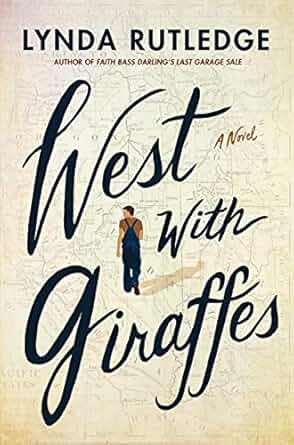
Since I’ve mentioned this book a few times already in this newsletter, I figured it was time to share a bit more about it. A friend highly recommended it, and I didn’t realize until it arrived that it’s a pocket-sized book you can read in under an hour. I actually carry it in my purse for those times I’m stuck waiting, and I’ve dog-eared quite a few important passages. While the title might sound a little...meh (for lack of a better word), the book itself is a thoughtful guide for living well. It’s packed with bite-sized bits of wisdom and insights. This is one of those books you can read again and again and still walk away with something new each time. I’m even planning to buy a copy for each of my kids—even if I can only count on one of them to actually read it!
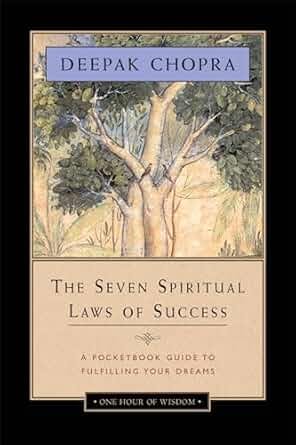
Final Thoughts…
One of my intentions this season is to notice and savor the simple joys around me, and lately, they’ve been showing up more than I expected—especially in the form of surprise calls from Cam. The summer before he left for boot camp, I think we were both ready for a little space from each other. At times, it felt like my sheer presence was enough to set him off. But veteran parents kept tell me that it would change when he lived on his own, and I’m happy to report, they were right!
Now, he FaceTimes us a few times a week, and we’ll sometimes spend an hour or more just talking. A few weeks ago, he called at the same time his best friend Nick happened to be on the phone with D, so we all ended up on FaceTime together. It was like the good ole’ days when we were all co-existing under the same roof except now distance and a little maturity has shifted the dynamic in the best of ways. It’s these small, unexpected moments of connection that remind me just how sweet and full life can be, if I slow down enough to notice.
I sometimes wish I had been better at finding that joy when my kids were younger, when the days felt long and noisy and full. But part of me wonders if you can only truly recognize the simple joys once you’ve lived long enough to know what really matters. This summer, I’m hoping to savor all the moments—especially the little ones that come free and full. As we move into the heart of the season, may we all become more aware of where our attention lingers. Are we giving our energy to the things we truly want to nurture and grow—like slowing down, breathing more deeply, savoring a book, or simply being where we are? There’s so much to notice and appreciate when we allow ourselves to move at a slower pace. Happy June!
Sending Love,
Leonor
Leonor is a licensed ELA teacher, Director of the Hammett Ory Library at The Fenn School, and Moga (Mindfulness + Yoga) Practitioner. She is also the mother of three boys and has learned a whole lot from making mistakes and trying again.

